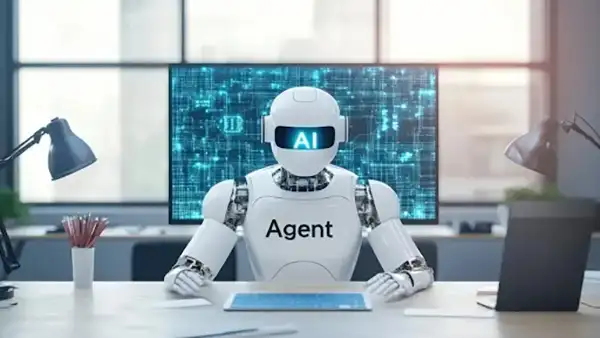
AI agents are becoming vital components of contemporary business functions, even if they are now quietly operating within the core systems that drive operational activity.
This change is not some loud, leaping, disruptive change, but an important structural change. Innovative organizations are intentionally creating small, specialized agents designed to execute complex, automatic tasks, with surprisingly little oversight beyond the humans who made them.
These are not AI tools designed to simulate how we humans think; they are created for the sole purpose of providing reliable, consistent work. This new type of flexible AI architecture, such as https://perfsys.com/, gives teams the ability to integrate lean, secure agent frameworks into their existing tool sets while maintaining compliance.
Let’s learn about the seamless function of AI agents!
KEY TAKEAWAYS
- Agents enhance human concentration by automating repetitive, structured activities.
- Modern AI practices rely on flexible models that can be adapted to and proactively supported.
- Setting up productive practices all begins with a fundamental operational need.
- Safety and confidence are built through audit logs and clear human escalation paths.
- The future will consist of many smaller task-oriented agents enhancing enterprise systems.
The biggest misunderstanding about AI agents is that they’re meant to replace people. In reality, their strength lies in empowering them. They take over repetitive data entry, operations, triaging, and validation, so humans can focus on strategy and exceptions.
Each agent runs a simple cycle: understand the task, select the right tool, verify, act, and report. That’s it. No unnecessary “creativity,” just consistent execution.
Unlike traditional bots that depend on rigid scripts, modern agents rely on large language models paired with domain-specific tools. They trigger APIs, interpret instructions, fetch relevant data, and adjust to changing contexts.
When set up right, they are not just reactive; they are proactive. For example, a customer treatment agent can anticipate common challenges based on previous conversations and prepare solutions before the ticket is even opened. This adaptability depends heavily on a robust infrastructure — often powered by a scalable cloud solution.
Reliable cloud architecture guarantees that agents can securely manage workloads, access data, and integrate with enterprise systems in real time. Practical examples, such as https://perfsys.com/case-studies/ai-mental-health-assistant-mvp-aws-bedrock/, show how this approach enables AI systems to uphold both flexibility and trust at scale, turning theoretical designs into working, reliable products.
Effective AI work takes place long before any code is written. The teams that succeed are the ones that put aside the urge to chase “intelligent automation” as a slogan and instead anchor every decision in a definite operational need.
The goal is not to build an all-knowing assistant, but to build a reliable system that improves one concrete workflow from day one. That is achieved by defining the boundaries early, choosing what the agent should not do, and shaping the architecture around predictable behavior.
When the focus stays on solving a real problem, not on impressing stakeholders, the result is an easier iteration, sturdier foundation, and a product that earns trust through consistency
The more capable an agent becomes, the more precisely it must be monitored. Every workflow requires permission checks, audit logs, and clear escalation paths. In sensitive fields, finance, healthcare, and education, that’s non-negotiable.
The Bedrock mental health MVP illustrates that safety does not have to kill innovation. By embedding risk detection, clear consent, and human handoff mechanisms from the first sprint. It showed that AI systems can handle sensitive contexts responsibly. This mindset will represent the next phase of AI adoption: controlled power, not blind automation.
We are heading into a world of layered intelligence, dozens of small agents handling micro-tasks rather than one “super assistant” doing everything. Marketing teams will have campaign planners that respond to analytics bots. HR systems will additionally include onboarding agents syncing with payroll.
Developers will have establishment agents that reason about logs and alerts. These agents will not look like robots or chat windows. They will live quietly inside dashboards and APIs, doing the ineffective work that used to drain hours of human focus.
Businesses that understand this change early will gain speed without chaos, automation with accountability. AI is shifting from experimentation to infrastructure.
The sooner organizations learn to build safe, lean, purpose-driven agents, the smoother that transition will be. Additionally, as the AWS Bedrock case study shows, the path forward isn’t built on hype, it is built on small wins that scale.
New agents are flexible and capable of using tools, while old chatbots only followed rigid, fixed scripts.
They consistently automate necessary complexity and repetitive work so that people can focus on more critical, strategic activities.
A proactive agent can be programmed to sense the needs of users or issues with the system, based on previous data, even before being instructed by a user.
It is essential so that agents can safely access the real-time data needed to facilitate consistent execution at the enterprise level.
